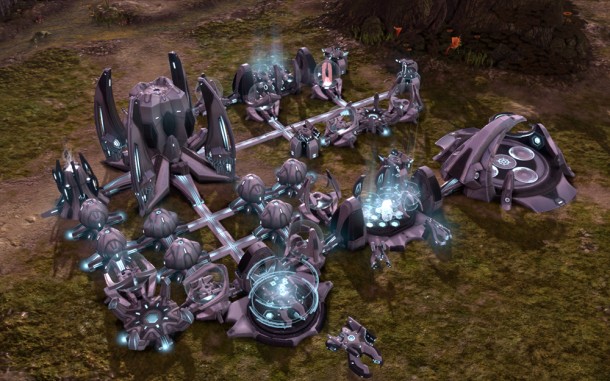
I suck at RTS games. Well, maybe “suck” is a harsh word. It probably borders more on “don’t have time to learn hundreds of new game play mechanics so I usually quit”. Modern RTS games take a lot of time to learn, and easily hundreds of hours to master. By the time I begin one for the first time, the community is usually far enough along and in deep enough that I never stand a chance in PvP.
Developers Petroglyph Games seem to feel the same way, because after trying out their demo of Grey Goo at E3 last week I’m 150% convinced that they created the game JUST FOR ME.
“We stripped away the things that were overcomplicating modern RTS games and focused on the absolute basics of the genre,” Andrew Zoboki, Lead Game Designer explained. Grey Goo‘s producers feel that the current direction of the genre can be off-putting for players looking for a more classic experience. Today, resource management now requires spreadsheets to keep track of everything coming and going, armies require us to be ambidextrous, and “clicks per minute” is more important than on-the-fly fun. But that doesn’t mean that the game is stuck in the constructs of the early 90s. “Players have evolved, we know that, and they’re ready for new and interesting ways to play without breaking what those basics are.”
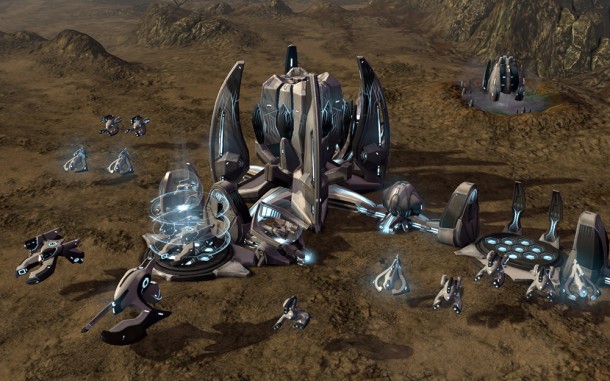
The solution: layers of an onion. That’s my description for how the play field is laid out and managed, where a central core is the beginning of a base and features are added onto it, and more onto those, so that “rings” of content begin to appear. It’s sort of like a city sprawl, where the core reaches out with tendrils that provide power to potential future structures. That means that I need to plan ahead a little bit before I plop down defensive towers or armories.
My demo had me start as one of the three factions (the defensive Humans, the aggressive Goo, or the flexible Beta — I chose Humans) in a small encampment in the middle of an alien planet. My first task was to grab resources (power) from a nearby natural vent. After enough resources were obtained I was able to begin building defenses. First, though, I needed to create the structural fingers that deliver power throughout my complex. This was as easy as clicking and “painting” in the direction that I wanted them to extend, and for how far I wanted them to go. I created three of these, each one facing a potential entry point for enemies into my territory, and built defense towers at their ends. The only way to create buildings is to link them onto the power lines so that they’re able to function. Protecting these lines is extremely important.
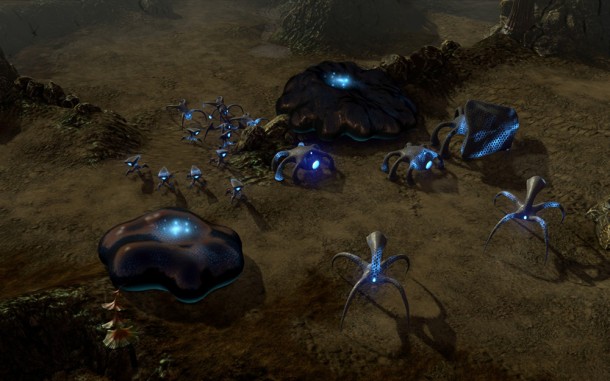
My next task was to develop army units, and since they attach in very specific ways to the power lines I had to stick them closer together than I had wanted to. My bad planning was at fault here. Several flying units were being manufactured, and I had saved enough resources to begin upgrading them. But…
The nearby vent was running low. I needed to begin searching out through the fog of war into adjoining areas to find more, so I headed South. Just a short trot down and I had found two more vents, brimming with life-giving gasses, and began building the extraction machines on top of them.
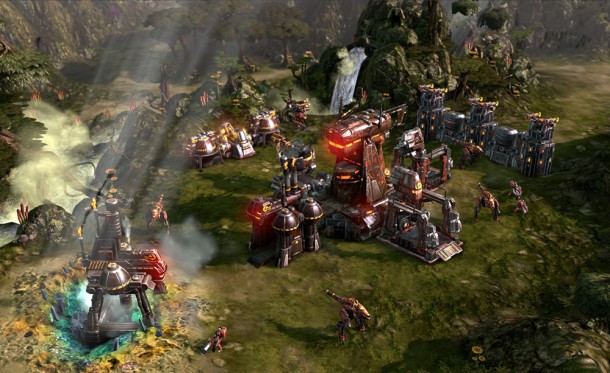
It was at this time that I was attacked by a small scouting party by my computer opponent. No worries, as I was able to crush them fairly easily.
“The AI adapts to how you play. That was a test. Now it’s starting to learn how and where you’re defending.” Uh oh. That didn’t sound very good. And it wasn’t, as a second slightly larger wave appeared from my defenseless West. I quickly sent most of my units there to squash it. “Those are just smaller units. I’d suggest beginning to build larger fighters.”
My focus moved from developing my settlement to defending it, as I also built a protective force field barrier around parts of my core. My units could fire through the barriers if needed, but the enemies had to destroy them first. Low on resources (from ordering larger battle units) I could only build the barriers in short lengths, leaving holes in precarious places.
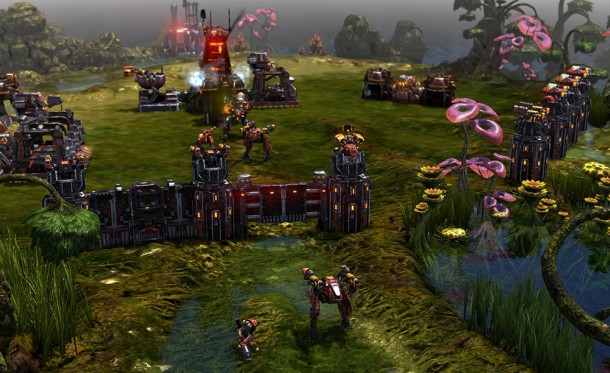
More waves of enemies arrived, and I was trying to create units as fast as possible, but it was becoming more difficult to keep up. Finally, massive beasts arrived at my doorstep, decimating my defensive towers as my lasers and bullets seemed to bounce off of them. I hadn’t upgraded enough of my weapons, and relied too much on quantity over quality. I was doomed.
“Wow. You’re the first person to lose all morning,” I’m told. Not great for my confidence. But at the same time, I was oddly compelled to try again. And again. And again. E3 schedules didn’t permit this to take place, but the taste was digestible enough for me to enjoy the hectic combat even in loss. It was almost like playing an RTS puzzle, not a simulation, fitting the pieces together to make the best combinations of defense and power grid. Grey Goo‘s simplicity was enough to draw me in, and the sprawl-like mechanism was enough to keep me glued.
Or gooed.
Disclosure: One of the PR folks handling Grey Goo scheduling at E3 has appeared on Lonely TARDIS, which used to be hosted on SideQuesting

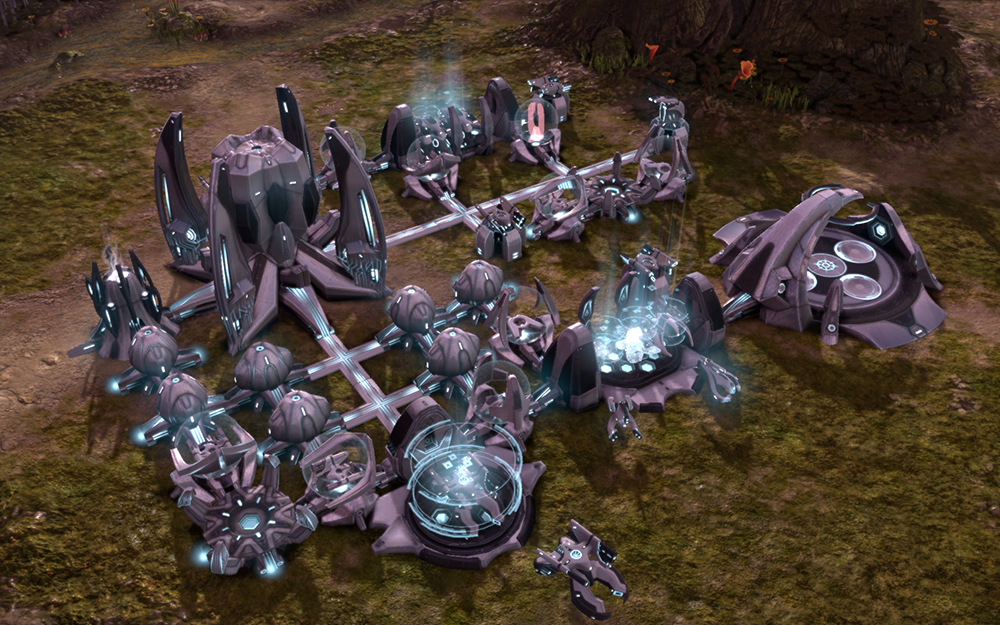
No Comments